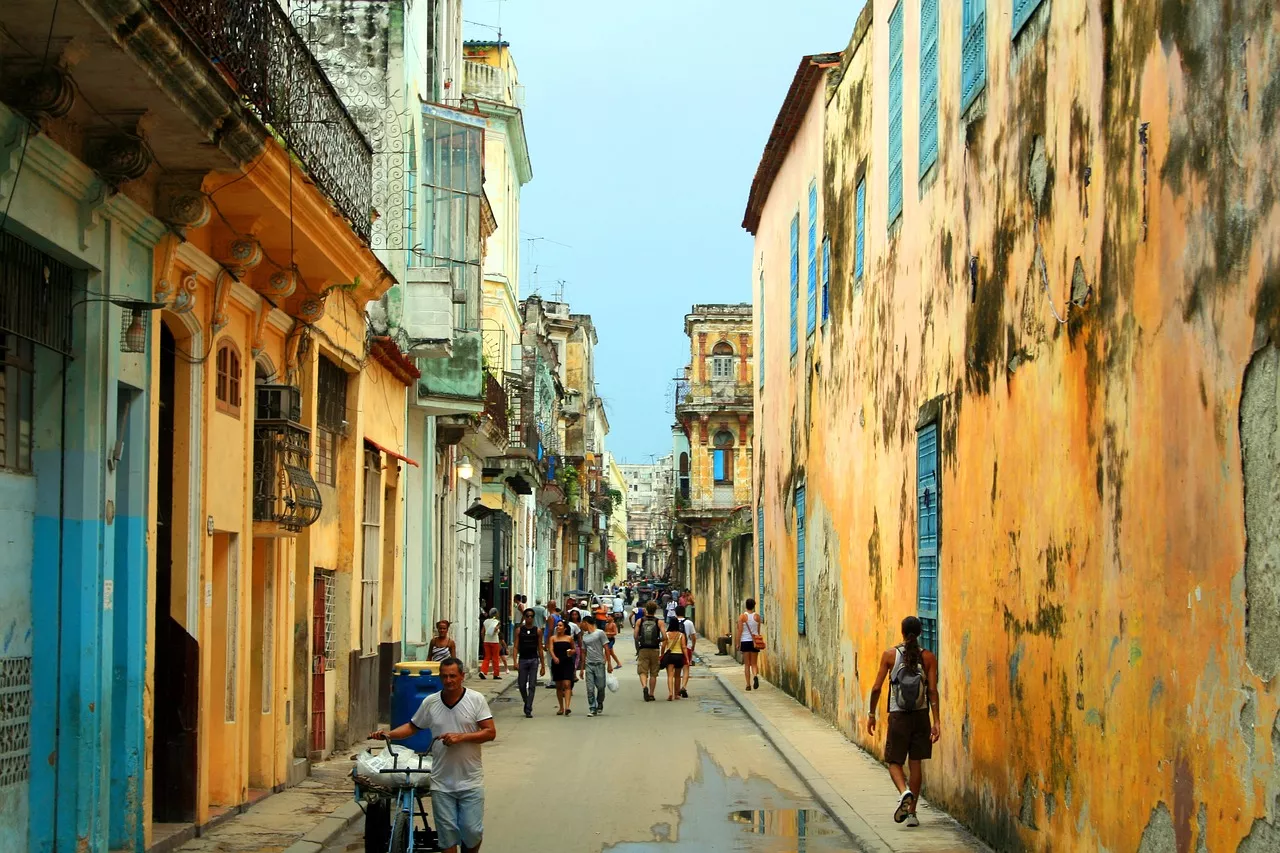History and Cultural Influences on Cuban Cuisine
Cuban food is a beautiful reflection of the island's cultural melting pot, blending Spanish, African, and Caribbean influences in delicious harmony. The cuisine has been shaped by centuries of colonization, slavery, and immigration, resulting in a diverse range of flavors and techniques.
The Spanish brought their culinary traditions to Cuba, introducing ingredients such as rice, beans, and pork. African slaves contributed their knowledge of cooking with tropical ingredients and spices, as well as the use of slow cooking methods. The native Taino people also left their mark on Cuban cuisine, with ingredients like yuca and corn continuing to be staples in many dishes.
Key Ingredients in Cuban Dishes
Cuban cuisine is known for its use of fresh and flavorful ingredients. Some key ingredients you'll find in many Cuban dishes include:
1. Sofrito:
A fragrant blend of onions, garlic, peppers, tomatoes, and spices, sofrito is the foundation of many Cuban recipes.
2. Beans:
Black beans and rice, known as "moros y cristianos," are a staple in Cuban cuisine. They are often cooked with a variety of spices and served as a side dish or as a main course.
3. Plantains:
These starchy, banana-like fruits are a versatile ingredient in Cuban cooking. They can be fried, boiled, or mashed, and are used in both savory and sweet dishes.
4. Citrus Fruits:
Oranges, limes, and lemons are commonly used in Cuban cuisine to add a tangy and refreshing flavor to dishes and drinks.
5. Pork:
As a result of Spanish influence, pork is a popular meat in Cuban dishes. It is often marinated and slow-cooked to achieve tender and flavorful results.
Popular Traditional Cuban Dishes
Now let's dive into some of the most beloved traditional Cuban dishes:
1. Ropa Vieja:
This iconic Cuban dish consists of tender shredded beef cooked in a rich tomato-based sauce with onions, peppers, and spices. The meat is slow-cooked until it falls apart, resulting in a melt-in-your-mouth texture. Ropa Vieja is often served with rice, black beans, and fried plantains.
2. Lechón Asado:
A must-try for pork lovers, Lechón Asado is a whole roasted pig marinated in garlic, citrus juices, and spices. The meat is succulent and flavorful, with a crispy skin that adds an irresistible crunch.
3. Picadillo:
A comforting and hearty dish, Picadillo is made with ground beef cooked with onions, garlic, peppers, tomatoes, and spices. It is often served over rice and accompanied by fried plantains.
4. Moros y Cristianos:
This classic Cuban dish combines black beans and rice, cooked together with sofrito and spices. The result is a flavorful and satisfying side dish that pairs well with a variety of main courses.
5. Cuban Sandwich:
A staple of Cuban street food, the Cuban sandwich is made with roasted pork, ham, Swiss cheese, pickles, and mustard, all pressed between slices of Cuban bread. It is then grilled until the cheese melts and the bread is crispy.
Traditional Cuban Desserts and Drinks
No culinary tour of Cuba would be complete without indulging in some traditional desserts and drinks:
1. Flan:
A creamy and caramelized custard dessert, Flan is a sweet treat that is loved by many. It is made with eggs, milk, sugar, and vanilla, and then baked until set. The dessert is then inverted onto a plate, revealing a luscious caramel sauce.
2. Tres Leches Cake:
This moist and rich cake is soaked in a mixture of three different kinds of milk (evaporated milk, condensed milk, and heavy cream) and topped with whipped cream. It is a decadent dessert that is sure to satisfy any sweet tooth.
3. Mojito:
One of the most famous Cuban cocktails, the Mojito is a refreshing blend of white rum, lime juice, mint leaves, sugar, and soda water. It is a perfect drink to cool off on a hot day and pairs well with many Cuban dishes.
4. Cuban Coffee:
Known for its strong and robust flavor, Cuban coffee is a staple in the country. It is made by brewing finely ground dark roast coffee beans with sugar, resulting in a sweet and intense shot of caffeine.
Cuban Cooking Techniques and Methods
Traditional Cuban cuisine incorporates a variety of cooking techniques and methods to achieve its distinct flavors and textures. Some common techniques include:
1. Slow Cooking:
Many Cuban dishes, such as Ropa Vieja and Lechón Asado, require slow cooking to achieve tender and flavorful results. This method allows the flavors to develop and the meat to become incredibly tender.
2. Marinating:
Marinating is a common practice in Cuban cooking, especially when it comes to pork. Marinating meat in a flavorful mixture of citrus juices, garlic, and spices helps to tenderize the meat and infuse it with flavor.
3. Frying:
Frying is a popular cooking method in Cuban cuisine, particularly when it comes to plantains, fritters, and empanadas. It adds a crispy texture and enhances the flavors of the ingredients.
4. Grilling:
Grilling is another common cooking technique in Cuba, especially for meats. It imparts a smoky flavor and a charred exterior, adding depth to the dish.
Where to Experience Traditional Cuban Cuisine
If you're lucky enough to visit Cuba, there are several places where you can experience the best of traditional Cuban cuisine:
1. Havana:
The capital city of Cuba is a food lover's paradise, with a wide range of restaurants and street food stalls offering traditional Cuban dishes. From hole-in-the-wall eateries to upscale establishments, Havana has something to suit every taste and budget.
2. Trinidad:
This UNESCO World Heritage Site is not only known for its stunning architecture but also for its vibrant food scene. You can find traditional Cuban dishes served in charming restaurants and family-owned paladares.
3. Santiago de Cuba:
Located in the eastern part of the island, Santiago de Cuba is known for its Afro-Cuban influences and vibrant music scene. You can find traditional Cuban dishes infused with unique flavors and spices.
Tips for Cooking Traditional Cuban Dishes at Home
Bringing the flavors of Cuba into your own kitchen is easier than you might think. Here are some tips to help you cook traditional Cuban dishes at home:
1. Invest in traditional ingredients:
Stock up on key ingredients such as sofrito, black beans, rice, plantains, and spices to ensure an authentic Cuban flavor.
2. Take your time:
Many traditional Cuban dishes require slow cooking or marinating, so be patient and allow the flavors to develop.
3. Experiment with spices:
Cuban cuisine is known for its bold flavors, so don't be afraid to experiment with spices such as cumin, oregano, and bay leaves to add depth to your dishes.
4. Use fresh ingredients:
Fresh ingredients will always yield the best results, so try to use seasonal and high-quality produce whenever possible.
5. Don't forget the side dishes:
Traditional Cuban meals are often accompanied by sides such as rice, beans, and fried plantains, so be sure to include them in your meal.
Health Benefits of Traditional Cuban Cuisine
Traditional Cuban cuisine, with its emphasis on fresh ingredients and flavorful spices, offers several health benefits:
1. Rich in vegetables and fruits:
Cuban dishes commonly include a variety of vegetables and tropical fruits, providing essential vitamins, minerals, and antioxidants.
2. Good source of lean protein:
Cuban cuisine often features lean proteins such as pork and seafood, which are low in saturated fat and rich in essential nutrients.
3. Fiber-rich:
Many traditional Cuban dishes include black beans and rice, which are high in fiber, aiding digestion and promoting a healthy gut.
4. Moderate use of fats:
While Cuban cuisine does include fats such as olive oil and pork, they are typically used in moderation, contributing to a balanced diet.
Celebrating the Flavors of Cuban Culture
From Ropa Vieja to Mojitos, traditional Cuban cuisine is a celebration of flavors, history, and cultural diversity. The blend of Spanish, African, and Caribbean influences has created a culinary landscape that is vibrant, bold, and irresistibly delicious. Whether you're savoring a plate of slow-cooked beef or sipping on a refreshing Mojito, each bite and sip transports you to the colorful streets of Cuba.
So why not bring a taste of Cuba into your own kitchen? With its rich history, diverse ingredients, and unique cooking techniques, traditional Cuban cuisine is a journey worth embarking on. So grab your apron, gather your ingredients, and get ready to savor the flavors of Cuba in every bite. ¡Buen provecho!

 From Fish and Chips to Yorkshire Pudding: UK's Iconic Food
From Fish and Chips to Yorkshire Pudding: UK's Iconic Food Start the New Year Right with These Delicious Gluten-Free Recipes
Start the New Year Right with These Delicious Gluten-Free Recipes



